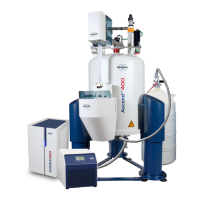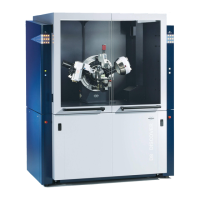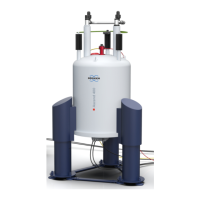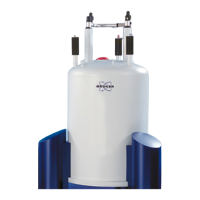Preparing for Acquisition, Frequency Related Parameters
H171804E_14_001 49 / 86
Hence if O1, the offset frequency, is set to 8 kHz, the window is shifted to look like that in the
figure below.
Figure6.2: Spectrum with BF1 =600.13 MHz, 01= 8 kHz
1. Frequency
Finally, it is clear from the figure above that the NMR signals emitted by the protons in our
hypothetical sample occupy only part of the spectral width. Therefore the spectral width can
be reduced without any loss of relevant data. One advantage of decreasing the SW is that
the spectral resolution is improved. The disadvantage is that the time taken to acquire the
data is proportionally increased.
In Introductory Theory and Terminology [}9], it was stated that the chemical shifts of protons
rarely exceed 14 ppm. This corresponds to 8.4 kHz on a 600 MHz spectrometer. The figure
below shows the hypothetical spectrum redrawn with the value assigned to SWH reduced
from 20 kHz to 8.4 kHz.
Figure6.3: Spectrum with BF1 = 600.13 MHz, 01 = 8 kHz, SWH = 8.4 kHz
1. Frequency

